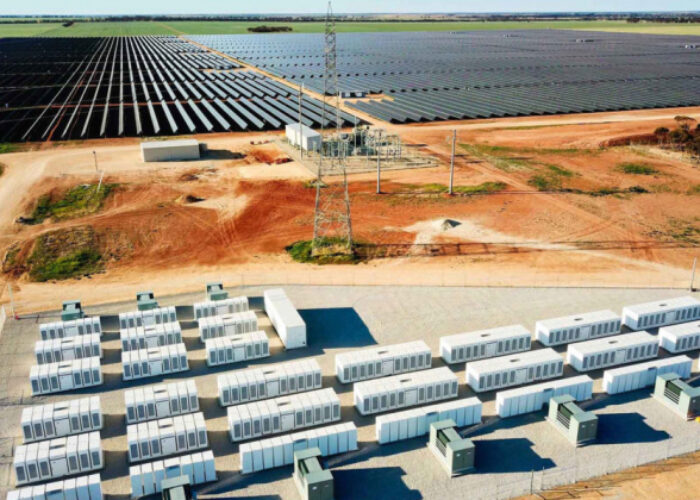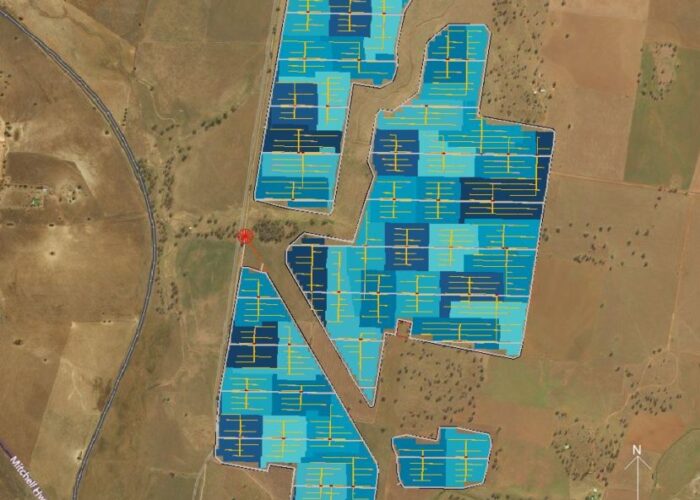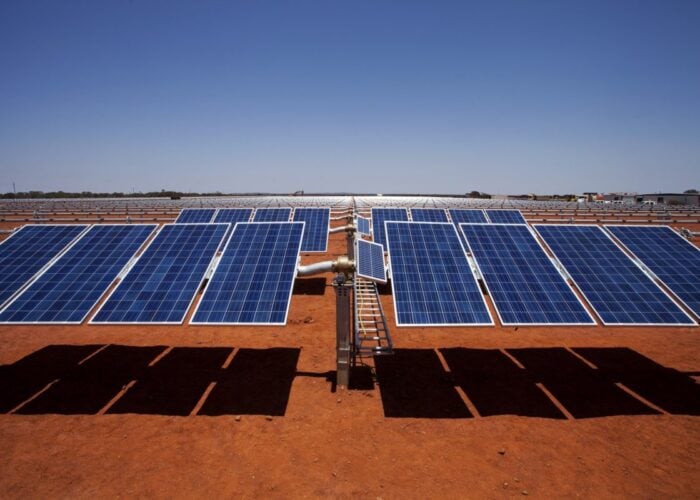
The rapid deployment of solar and other renewables is creating new pressures on the efficient operation of electricity markets. Stephen Woodhouse looks at whether a shift from national to locational pricing offers a solution to optimal market design as decarbonisation efforts gather.
Unlock unlimited access for 12 whole months of distinctive global analysis
Photovoltaics International is now included.
- Regular insight and analysis of the industry’s biggest developments
- In-depth interviews with the industry’s leading figures
- Unlimited digital access to the PV Tech Power journal catalogue
- Unlimited digital access to the Photovoltaics International journal catalogue
- Access to more than 1,000 technical papers
- Discounts on Solar Media’s portfolio of events, in-person and virtual
Or continue reading this article for free
The value of everything is affected by its location, but in most countries electricity prices are still determined nationally. Renewables are modular and are being added rapidly, outpacing the development of network infrastructure, which in turn is creating expensive congestion issues.
ESO, the electricity system operator in Great Britain, forecasts constraint costs for the next 12 months at an eye-watering £1.5 billion (US$1.9 billion). Could moving to more granular locational electricity prices help? While the answer is complicated, AFRY’s analysis shows that risks of shifting to locational pricing may outweigh benefits.
Almost every aspect of the electricity market design in Great Britain is being reconsidered under the UK government’s Review of Electricity Market Arrangements (REMA). There is widespread agreement that today’s market arrangements are not suitable for a net-zero system, but little consensus on the nature or extent of change which is necessary.
One of the most contentious issues in the REMA process is whether to move from the current market with a national price, across Great Britain, to one in which wholesale prices differ by location. The debate about locational pricing is also raging in key markets in Europe – including France, Germany and the Netherlands – which are also facing proposals for separation into new price zones.
To frame this debate, AFRY has conducted an independent study of the REMA options under consideration – including a detailed modelling evaluation of both zonal and nodal locational pricing options. The study was funded by 12 industry members with diverse opinions on the subject, with observers from key stakeholders, and this article draws on our key findings.
What are the options for locational energy pricing?
All electricity markets are locational to some degree. There are broadly three options within a country: national, zonal (different areas) or nodal pricing (each point on the transmission network). In most countries the price area matches national borders, with a single national wholesale price at any time.
Some national markets are split into a small number of zonal price areas: Norway (five zones), Italy (seven, for generation), Australia’s NEM (five). The EU’s wholesale energy market uses ‘price coupling’ for over 60 zones across the continent in a sequence of linked spot markets, until recently, including Britain.
In contrast is the nodal market design typical of the restructured US markets such as PJM, California (with around 10,000 nodes) and Texas (with around 4,000 nodes). US nodal markets tend to be regional, with relatively poor optimisation of flows between neighbouring markets. Customers generally face prices at a more aggregate level than generators.
National market management
For national markets, prices are formed by national supply and demand, and import and export trade through interconnectors.
Transmission constraints within the country are managed by the transmission system operator (TSO) through ‘redispatch’. For example, the TSO may curtail solar output sited behind an export transmission constraint, then replace it with more expensive natural gas generation outside the constraint which had not been previously traded.
Compensation arrangements for generators whose output is constrained vary between markets. In Britain, ‘firm’ transmission access rights generally mean that generators are not commercially disadvantaged by transmission constraints, even for lost RES support payments. In other markets, for instance Australia, there is no compensation for a generator being constrained off because of network congestion.
Timing is key: the wholesale national market operates before consideration of within-zone network constraints, and then redispatch happens relatively close to real time. Therefore, less flexible assets, including interconnectors, may not be redispatched efficiently in a national market. This is a potential source of inefficiency, for which a locational market may bring improvements.
Simultaneous delivery in zonal markets
In zonal markets, the market simultaneously delivers prices and matched trades for each zone and defines total traded flows between zones. Trades and flows may be refined in the intraday markets. Bids and offers for each zone are combined with input parameters, calculated by the TSOs, which define the usable transmission capacity between zones.
The pattern of price differences between zones is linked to flows on the network. With no congestion, prices may be the same across multiple zones. When transmission limits are reached, prices diverge between zones. Zonal prices normally apply to both sellers and buyers.
Mechanics are important: generation behind a zonal boundary constraint is not curtailed by the TSO, as in national markets. Instead, prices in export-constrained areas will tend to be lower than under a national price and prices in import-constrained areas will tend to be higher than under a national price. Market revenue for generators in zones with export constraints will be reduced.
Forward trading is needed within and between zones. The arrangements vary for obtaining transmission rights to trade between zones, but the effect is similar: a generator and a customer in different locations may trade with each other and may buy rights to hedge against price differences between their respective zones. Transmission rights are generally short term, between one and two years, and baseload in profile.
The zonal markets broadly respect the network capacity between zones but not within the zones. Any intra-zonal constraints must be dealt with by the TSO through ‘redispatch’ as described above for the national markets.
This design of zonal markets – in which the network is represented in a simplified way – has enabled day-ahead market coupling to be extended to the whole of Europe, where there are 61 zones for 27 countries. The markets are decentralised and voluntary in nature, and participants may choose the timeframe and market venue in which they trade.
Nodal markets and central optimisation
The intent behind nodal pricing is similar to zonal: prices at each location reflect supply and demand allowing for transfers from elsewhere. Nodal markets use a (near) complete view of the network, so market outcomes should respect all transmission constraints without further need for redispatch.
Nodal markets are centrally optimised: this is a complex topic but in essence they are organised around a mandatory market optimisation which runs at discrete times: day-ahead and ‘real-time’, with no traded intraday market. Some nodal markets co-optimise energy with reserve and response.
Market power still exists in a nodal market but has different impacts and is exercised in different ways. It is the physical circumstances which confer market power, not the market arrangements. The ability of participants to exploit market power depends on where they are on the grid, their access rights and the regulatory oversight.
A well-designed electricity market should effectively coordinate supply and demand over operational and investment timeframes, while appropriately allocating costs, rewards and risks. The theory of nodal pricing sounds attractive: based on the offers by participants, the market calculates optimal dispatch and prices energy at every location based on the available network capacity. The reality is more complex.
Implications for short-term trading and dispatch
Nodal pricing gives a more integrated dispatch process and is likely to give more efficient dispatch than zonal or national markets. Nodal markets accommodate network constraints, simplifying the process of scheduling and dispatching. Compared with a national or zonal system with residual intra-zonal constraints, dispatch decisions are taken more effectively for those less-flexible units which might not be available when redispatch is conducted.
However, nodal markets use algorithms, which were designed for large thermal generation units. It is questionable whether a centralised market is truly compatible with a decentralising power system. Optimisation of resources such as storage and electric vehicle (EV) chargers has not been fully implemented in any nodal market, and it is unclear whether the systems could deal with a large number of small resources. Aggregation is limited as each trade is linked to a point on the transmission network.
Centralised nodal markets operate at intervals, generally day-ahead and real time, with no intraday or continuous trading. Conversely, decentralised zonal and national markets allow continuous trading, allowing flexible resources to find a niche in the market to support varying demand and renewable generation.
If network congestion is typically caused by high levels of renewable generation, those renewable operators will face self-curtailment and reduced capture prices under a locational market. This may be partly mitigated by any support arrangements in place.
We could argue that centralised nodal spot markets focus on optimising location, whereas national or zonal markets focus on flexibility. In the future electricity system, it is not clear that a change away from favouring flexibility towards favouring location would be a step forward.
Impacts on investment and the role of politics
Advocates of zonal or nodal pricing suggest that it improves incentives to place resources in areas where the network is strong. Again, this sounds attractive.
However, there are potentially negative implications of locational pricing structures for forward trading and investment. A national market will generally have many buyers and sellers, fostering liquidity. Any internal transmission constraints are dealt with by the TSO and do not generally impinge on the market outcomes.
In markets with smaller zones or a nodal market, volatility is higher and liquidity is likely to be lower. Participants are commercially exposed to transmission constraints between price areas, especially to future policy decisions such as the siting of hydrogen and carbon capture and storage (CCUS) infrastructure. In a zonal system, zone boundaries themselves may be revised, undermining existing forward contracts.

As a consequence, market risk increases as the market is subdivided into smaller areas. Exposure to locational risk may be expected to increase the cost of capital for new investment. This could easily outweigh any benefits arising from more efficient dispatch of less flexible resources in a locational market.
Zone size is politically and economically important. There are obvious consequences of separating wholesale prices by location for both consumers and producers. A change from a national to a locational market will create winners and losers as pricing and risk profiles change.
The EU zone boundaries are reviewed every three years. The European Union Agency for the Cooperation of Energy Regulators (ACER) has proposed alternative bidding zone configurations for Germany, the Netherlands, France, Italy and Sweden. Despite the economic case for change, there is widespread opposition: in theory the Commission could enforce price zones on countries but this would be highly contentious. If zoning changes are made, any existing contracts in these countries would need to be adapted to deal with the revised price areas.
Alternatives to locational markets
There are alternatives to locational energy prices which may provide incentives for siting decisions and congestion management. The market toolkit includes a combination of connection policy, transmission access rights and network charges.
In Britain, zonal transmission network charges are paid by generators and customers. These charges are significant in deciding location: the range of network charges for 2023/24 between locations could equate to 20% of captured price for an onshore wind plant. The variation for solar would be less, as PV is less prevalent in Britain. Loss factors can also vary by up to 10% of gross revenue between favourable and unfavourable locations. These are powerful incentives. If locational energy markets were introduced to Britain, we believe that the existing locational network fees would be flattened.
In that case, it is not clear whether remote generators would be, on average, better or worse off from locational pricing, especially if grid reinforcement reduces the extent of congestion. The arrangements for grandfathered rights and renegotiation of existing contracts would be key to any implementation of locational pricing, in Britain as well as in Europe.
Other investment support mechanisms interact with wholesale market pricing. Renewable support mechanisms, such as feed-in tariffs or Contracts for Difference, are linked to the national price but would switch to a local reference price in any change to a locational market. This would partly, but not completely, wipe out the impact of locational pricing for those generators. For future renewable support mechanisms changes would be needed, and generators may face increased risk, which we believe would increase the cost of capital.
Potential for Great Britain
AFRY analysis of a potential move to zonal or nodal pricing did find a small improvement in operational efficiency, with economic benefits amounting to around 1% of total consumer bills in the period 2028-2050.
However, we believe that the additional risk on market participants would increase the cost of capital for investors. Under credible assumptions, we found that these increased costs could easily be double the efficiency gains. AFRY found the benefits of a move to locational pricing in Britain are small and could be outweighed if additional risks to investors cannot be mitigated.
We recommend that nodal pricing should not be progressed further due to the scale and risk of change, the time needed for implementation and the doubt over whether a centralised market is compatible with the future range of decentralised resources. Any further exploration of a zonal market design should be accompanied by a programme of work to explore ways in which the risks – and wealth transfers – could be mitigated.
Further work should also be undertaken to improve incentives and information flows under the existing national market design: specifically more targeted investment and operational dispatch incentives, particularly for interconnectors and for resources behind transmission constraints.
Our recommendations reflect the difficulty of changing market arrangements during a period of high investment needs. While there is a case for change, existing arrangements have had significant success in delivering decarbonisation, whereas radical change is likely to deter the investment.
The present discussion in Britain relates to transmission, but distribution networks are now being designed for some level of congestion management. Distribution System Operators (DSOs) in Britain are using a range of tools to manage congestion including buying flexibility services and offering ‘flexible’ connections, and local flexibility markets are being developed across Europe.
For renewable developers, the policy debate creates uncertainty. Optimising electricity market design for the transition is a complex topic, with no easy answers. Any shift in market design will create winners and losers.
Ultimately, nothing substitutes for the construction of network capacity. Investment in grids – at transmission and distribution level – is behind the curve of renewable investment and accelerated investment is essential to achieving our energy transition.
Author
Stephen Woodhouse is a director with AFRY Management Consulting. Stephen has 25 years’ experience in design and evaluation of energy markets and the role of innovation, contributes to the global debate on market design for the energy transition and is a well-known conference speaker.






